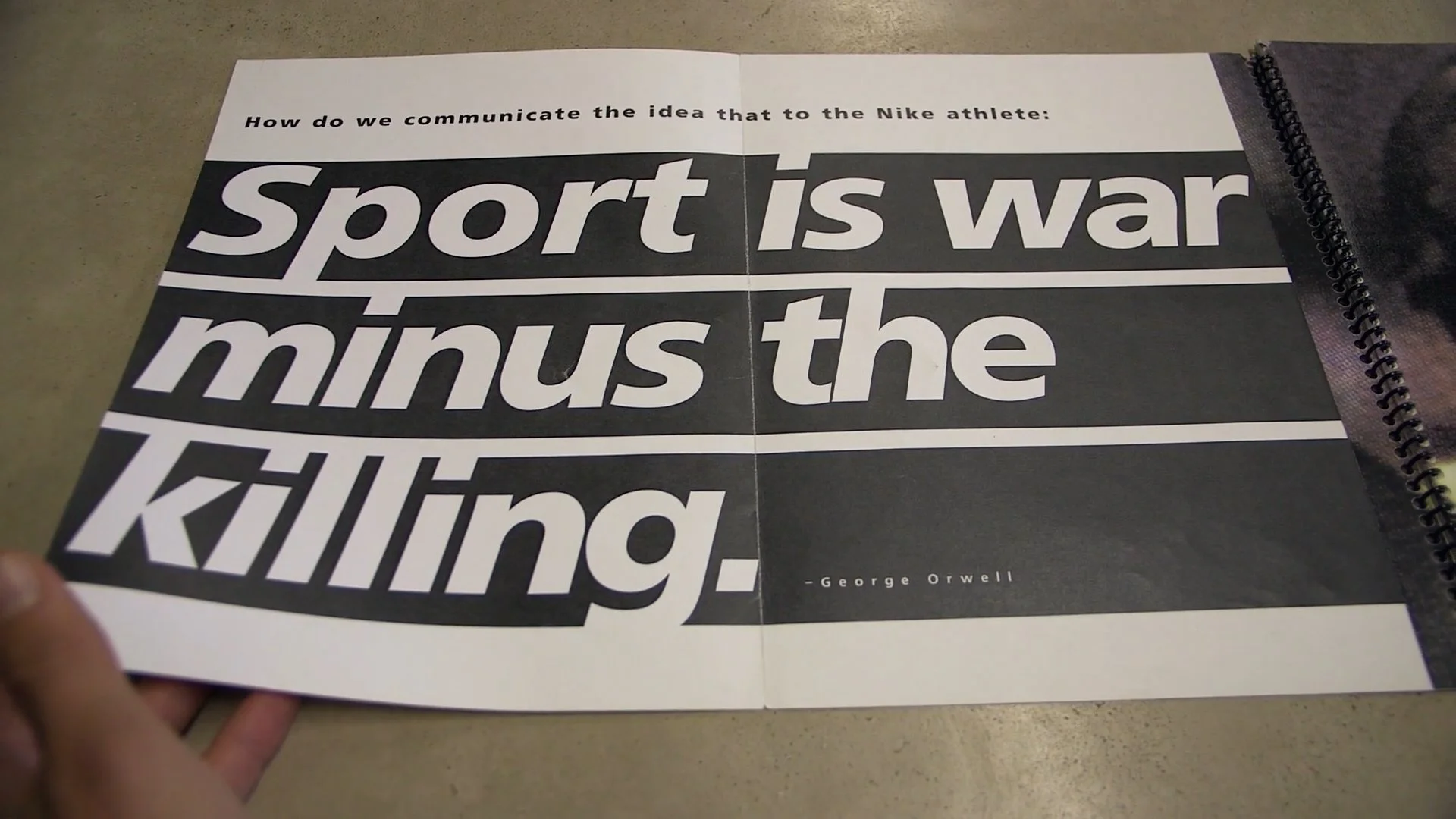My creative process explained
Yes, there have been countless articles articulating the creative process, and they’re all absolutely valid. But I wanted to explain my process in my own words, because I believe every creative approaches a project a little bit differently.
1. Never lose sight of the creative brief
The most basic step, but also the most important. So it bears repeating. Over and over and over again. I must understand the task (not just pretend to understand it). If I don’t understand, I’m not afraid to ask questions. Chances are, other people are wondering the same exact thing but they don’t want to sound dumb by asking.
Once I understand the brief, I will still keep referring to it to make sure I address the issue. It’s surprisingly easy get distracted by shiny things that might look cool but ultimately won’t solve the problem.
2. Know the client (and decision-makers)
Selling 101: Different people care about different things. Bob might care about brand consistency and business impact, while Jane may respond to emotional storytelling and vision. When I know what makes people tick, I can frame my ideas accordingly. I can anticipate questions and objections, allowing me to preempt concerns (“Does this align with our brand standards?”). Remember, these people all have important problems they’re trying to solve. Some of these problems might be keeping them up at night. Hopefully, our ideas can be of service.
The more I know about the decision-makers, the better. Of course, nothing guarantees success, but it’s better than going in blind.
3. The world is full of amazing things. Research it!
People have been doing amazing work for a long time. Some of it came out 2 years ago, some of it 2,000 years ago. Inspiration can come from anywhere! This is the time to whip out my favorite depositories of great curated work. Grab a net and let’s go hunting for things (anything!) that might be relevant to the project.
Go through all the techniques and thought exercises. Review all the brand archetypes. This is the time to dig for buried treasure. Treasure that we can remix and play with. Leave no stone unturned!
4. Come up with ideas, ideas and more ideas
Brainstorm and write down ALL the ideas. Then it’s time to play my favorite game: Keep and Kill. What ideas will live and what ideas will die? It’s best to do this with a trusted partner, but I can also do it by myself. After brainstorming all day, I like to go to sleep. When I wake up, I take note of what I remember and what I forget. This is a great way to judge my own ideas and give myself feedback.
Don’t worry, dead ideas never really die. They just go into cold storage in the back of my mind. Maybe one day they will rise again.
5. Get internal approval
I check in with the team and my Creative Director. I use the feedback to refine. Then when it’s ready, the work goes into the presentation deck.
6. Sell it (hopefully)
My presentation philosophy is simple: I am here to be of service. I’m not here to impress them with slick talk. I genuinely want to help them, and I believe our work can do that. If we can honestly solve their problems, that usually leads to a win.
Of course, things are not always that simple. There are often multiple stakeholders with different (unforeseen) concerns. This is also the time to humbly gather feedback to make changes that better help serve the client’s needs.
7. Green light? Go.
Now it’s time to actually make it. First, I get in a room and collaborate with the team to get the nitty gritty logistics down.
“Who are we working with? What’s the timeline? What’s the smartest, most efficient way of getting everything done?”
I work closely with the project managers to stay on track. Schedules aren’t always ideal and are often subject to (spontaneously) change, so it’s important to speak up if more help is needed.
Be on guard! Tight deadlines and other snags can often compromise the work. The job is to make sure the vision is protected every step along the way. (This is easier said than done.)
8. Reflection
After the work is complete, and the dust settles, it’s time to reflect on what just happened. Did everything go as planned? Did we encounter some annoying snags? How can we improve in the future?
Sadly, from my experience, the Post-Mortem “What can we do better?” meeting usually doesn’t take place. It might get scheduled on the calendar, but for whatever reason, it often gets cancelled and forgotten about. It just seems like people are quick to move on and put the project behind in the past. If that’s the case, then you can always just reflect by yourself or with a colleague you have a lot of rapport with.
And that’s my personal creative process in a nutshell. I’m always open to suggestions, so feel free to let me know if I’m missing something!


